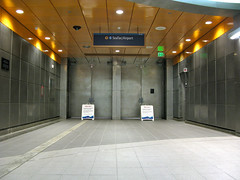
For more information, follow Sound Transit’s Rider Alerts page, or call the Rider Information number, 1-888-889-6368.

For more information, follow Sound Transit’s Rider Alerts page, or call the Rider Information number, 1-888-889-6368.

I’ve always admired Portland’s funky attitude towards street food vendors. What was years ago a smattering of taco trucks and falafel vendors, has grown into entire streets filled with every imaginable variety of food being served from every imaginable type of food wagon. Working in downtown Portland means having your choice between dozens of street vendors during lunchtime.
Since returning from my recent trip to Portland I’ve been dreaming of seeing more of this in Seattle. Besides my own selfish desires for more food selection, it’s also a perfect building block for a strong local economy. It does not take nearly as much money to start up a food cart as it would to open a restaurant, and it does not involve nearly as much risk—these types of small businesses are the front lines in a recovering economy.
I would love it if the area around our light rail station would develop into an area where street vendors would become more welcome and small business entrepreneurs would be given the time, community support, and space to try new types of businesses. As an added bonus this would give us a multi-ethnic gathering place, build community, and enliven ‘downtown’ Beacon Hill.
Joel Lee maintains the Beacon Hill Public Art website.
Do you have an opinion? We welcome opinion articles on topics related to Beacon Hill. Please email us your ideas.

Our first annual “Top of the Hill” survey is still open for a while yet, and we’re not releasing results until it closes, but there has been one fairly frequent answer that I’ve noticed. One of the questions is “What is your favorite public art on Beacon Hill?” and while most people do have a favorite, there has been a surprisingly large number of people who say they don’t know of any public art up here. While we may not have as much obvious public art as some neighborhoods, we do have a fair amount. (The number probably doubled with this year’s addition of the Link station and its multiple artworks.) Here’s a collection of images of some of the art we all enjoy on Beacon Hill.
Many of these photos are from the Beacon Hill Blog photo pool on Flickr. Have any photos you’d like to share? You are welcome to contribute them to the pool.
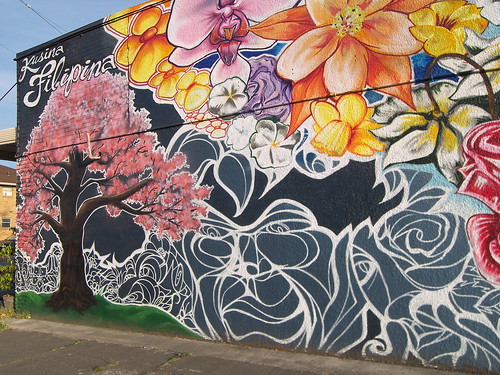

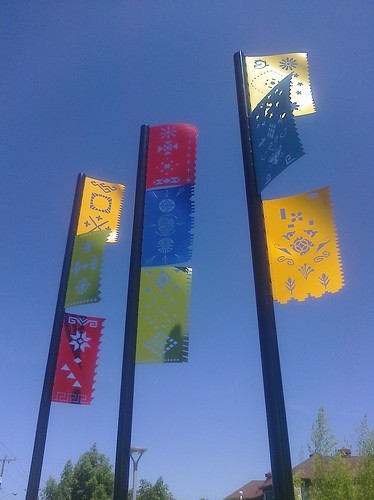
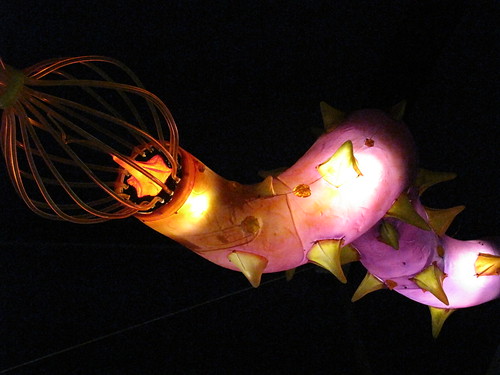
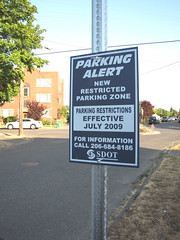
Since 2003, I’ve parked my car in front of the house on the concrete area between the sidewalk and the street. There are two spaces and the curb is cut to allow car access to the area. The car doesn’t block the sidewalk. We considered this area a parking strip. According to the brochure left on my windshield, the City considers it a planting strip and it is illegal to park there.
I’m not the only person on our block to use this area for long-term parking. If I park on the street, I have to move my car every 72 hours–even if I have nowhere to go. I thought parking on the parking strip was responsible; I’m frustrated that it’s not allowed.
We chose this neighborhood in part because the location encourages and supports leaving the car at home. I walk to Red Apple and restaurants and we both take mass transit to work. We have cars because occasionally we need them–but rarely every 72 hours.
How does a law that requires every car in the city move every 72 hours encourage people to get out of our cars? How is parking in a paved area with curb cutouts worse than parking on the street?
Does anyone know the process for initiating changes in parking policy?
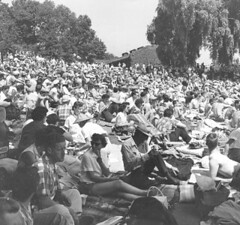
***
Roger Valdez of Beacon Hill writes in Sightline Daily about the long path to geting light rail in Seattle, and suggests steps the city will need to take to make it work in the long run, including smart land use policies that enhance and create transit demand by creating denser communities, and establishment of policies that will encourage and support transit ridership.
***
City Councilman Bruce Harrell reports his involvement in securing federal funds for lighting, pedestrian, and transit improvements at the Mount Baker light rail station and the Rainier Avenue South and South Jackson Street areas. The Rainier project will provide buses with “queue jumps” and traffic signal priority, as well as adding 15 bus bulbs. These changes will allow buses to save time by bypassing traffic and avoiding merges into heavy traffic. The Mount Baker project will involve lighting which will link the station with Franklin High School, and provide safer crossing for pedestrians on Rainier Avenue and MLK.
***
Nina Shapiro in the Seattle Weekly discusses issues of cultural disparity on Link light rail: is the train just “stuff white people like?” However, her article currently contains one big error — she suggests that riders of bus routes such as the #42 avoid Link because transfers from Link to the bus are not free. This is not true. Link tickets allow you to transfer to a bus for free. If #42 riders are avoiding Link for that reason, it is because of a misunderstanding of the fare system, and perhaps because Sound Transit/Metro haven’t yet done the best possible job of communicating how it works.
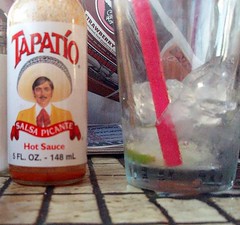
Baja Bistro has a full liquor license. They sell a limited number of bottled beers and probably have some wine–but the reason we go here is for the margaritas. Whether you go for traditional lime or upgrade to a house pomegranate-lime blend, you will not be disappointed. Drinks are served in pint glasses and balance great taste with moderate alcohol–and they’re within walking distance of my house!
I also rave about the tacos patatas–potato tacos. Trust me, they are incredible! Crispy, filling, but not greasy or heavy. Perfect with a margarita or other summer beverage. Also be sure to try the fish tacos, the mole enchiladas, and the incredible tortas (bolo sandwich with rich avocado and mayo spread). The homemade chips and salsa are also a treat, or you can upgrade to nachos.
Service at Baja Bistro is sincerely friendly. Everyone is made to feel welcome. Everyone on staff seems to enjoy being there and it’s clear they expect you to linger for a while. Service is quick, but the atmosphere encourages hanging out and enjoying a conversation (or a book). Baja Bistro is also kid friendly, at least on the Java Love side. The owner lives on Beacon Hill and received an award from The Stranger for being one of “Seattle’s Sexiest Baristas”. Someone should really nominate his younger brother for the award next year…
Regular prices are reasonable (meals for two are generally around $20-$25, more if you order drinks) and Happy Hour prices are very happy: $3 tacos and $5 margaritas.
Thanks to Link Light Rail, people who aren’t fortunate enough to walk to Baja Bistro will be able to take the train. Baja Bistro is two blocks north of the Beacon Hill light rail station. Come on up and enjoy some good food, great drinks, and outstanding company!
They close at 5:00 pm on Mondays, and stay open until 9:00 pm Tuesday-Friday. Enjoy breakfast and other items from 9:00 am-3:00 pm on weekends.
Neighborhood: Beacon Hill
2414 Beacon Avenue South
Seattle, WA 98144
(206) 323-0953
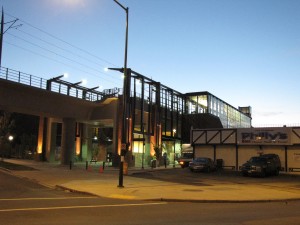
Thirty years after the stadium’s demise, the area is a relatively automobile-focused district containing fast food and big stores like Lowe’s, Rite Aid, and QFC, mostly surrounded by large parking lots, with cars speeding by on Rainier Avenue. It’s not a pedestrian-friendly environment, but the intent is that the new station, and the potential transit-friendly development it will attract, will improve that.
East of the station rises the imposing neoclassical façade of Franklin High School, which opened in 1912 and was renovated in the late 1980s.
Northeast of Lowe’s on MLK, between South Walker and South Bayview streets, you’ll find the Martin Luther King Junior Memorial Park, a tiered, grassy amphitheatre-like space containing a reflecting pool and a 30-foot-tall granite sculpture by Robert Kelly, inspired by King’s “I’ve Been to the Mountaintop” speech.
There is good eating to be found near the station, even if you have to dodge a few cars to find it. Thai Recipe is located in the same strip mall as Domino’s on McClellan, and it is the only Thai restaurant we know of that even borders on North Beacon Hill. The very friendly staff serves good, reliable, and tasty Thai food, available for take out or to eat in the small dining room.
Perhaps your current craving is for a cheesesteak sandwich instead. If so, there’s The Original Philly’s, almost in the shadow of Mount Baker station at the intersection of Rainier and McClellan.
The art at this station includes chandeliers on the underside of the guideway, made from recycled “cobra head” street lights (Sky Within by Sheila Klein), and painted glass forming splashes of color on the glass face of the station (Rain, Steam and Speed and Seattle Sunrise, both by Guy Kemper);
If you continue on the train toward downtown from Mount Baker, you will then turn west and enter the Beacon Hill tunnel. Here’s a video taken by Oran Viriyincy to give you a taste of what it’s like to ride the train from Mount Baker into the tunnel.
(As the big opening day for light rail is this Saturday, we want to post a bit about the stations that aren’t on Beacon Hill. Much of the coverage of the rail line focuses on using it for commuting to and from work, and many of us will be doing that. But even more than getting to work, Link is going to be useful for visiting places throughout Downtown and Southeast Seattle without a car. With this in mind, we’ve created a few posts about some of the station areas.)

The Columbia City Station is located on Martin Luther King Jr. Way South, just on the western edge of Columbia City. The station site itself is just south of a new development, Rainier Vista, a former public housing site originally built in the 1940s to house defense workers, and recently redeveloped as a multi-income community inspired by New Urbanist principles.
Walk from the south end of the station east on South Edmunds Street, and after about one-third of a mile you’ll emerge on the neighborhood’s main drag, Rainier Avenue South, just south of Southeast Seattle’s only full-time movie theater, the triple-screen Columbia City Cinema. Further north on Rainier is the recently-expanded Columbia Branch Library, a Georgian Revival-style Carnegie Library building from 1915. The library is listed on the National Register of Historic Places.
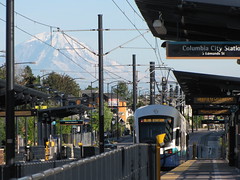
Restaurants in Columbia City are plentiful and you can choose from cuisines including Caribbean, barbecue, Neapolitan Italian, Ethiopian, Vietnamese, and more. There is also a brewpub, the Columbia City Ale House. (CC Ale House doesn’t actually brew, but they do have a fairly large selection of local and regional microbrews — Ed.)
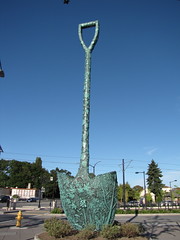
Like the other light rail stations, Columbia City Station is surrounded by public art, including Victoria Fuller’s Global Garden Shovel, a giant bronze shovel molded with the shapes of fruit and vegetables. In Norie Sato’s Pride, the south plaza of the station is guarded by lions customized to reflect the diversity of the neighborhood. When you are riding the train north from Othello Station to Columbia City, look to your left between Dawson Street and Hudson Street to see Sound of Light, by artist Richard C. Elliott, made of hundreds — perhaps thousands — of reflectors arranged in overlapping, symmetrical patterns. (See this one in both day and night, if you can.)
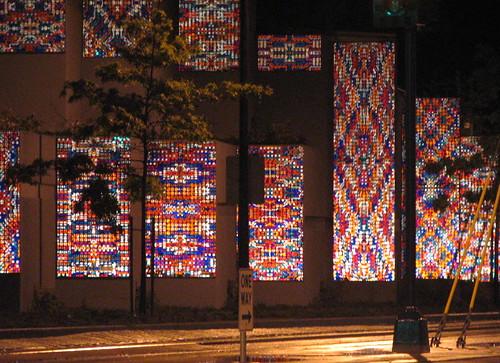
(As the big opening day for light rail is this Saturday, we want to post a bit about the stations that aren’t on Beacon Hill. Much of the coverage of the rail line focuses on using it for commuting to and from work, and many of us will be doing that. But even more than getting to work, Link is going to be useful for visiting places throughout Downtown and Southeast Seattle without a car. With this in mind, we’ve created a few posts about some of the station areas.)

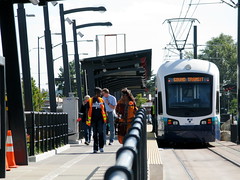
The public art around the station includes Roger Shimomura’s Rainier Valley Haiku, an exploration of Asian identity and culture in 21st Century America; Brian Goldbloom’s Stormwater Project, granite catchbasins inspired by Japanese stonework; and Augusta Asberry’s Come Dance With Me, in which eight stylized women dance along the edge of MLK in colorful dress.

The Othello Station area will be particularly festive on Link’s opening day, July 18, when a free community festival to celebrate light rail’s arrival will be held at MLK and South Othello Street. There will be food, art, commemorative souvenirs, “Undriver’s Licenses” for everyone, and entertainment including Massive Monkees, the Lion dancers, Big World Breaks, Ruby Shuz, and more.
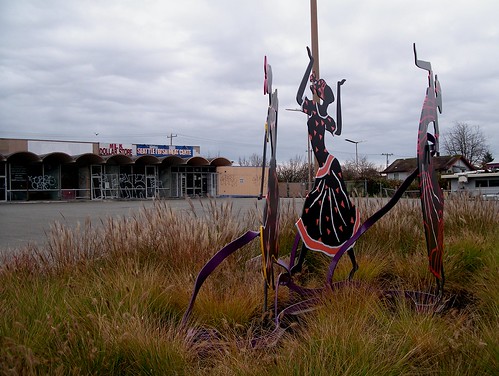
Updated with new information about the Othello Safeway remodel.